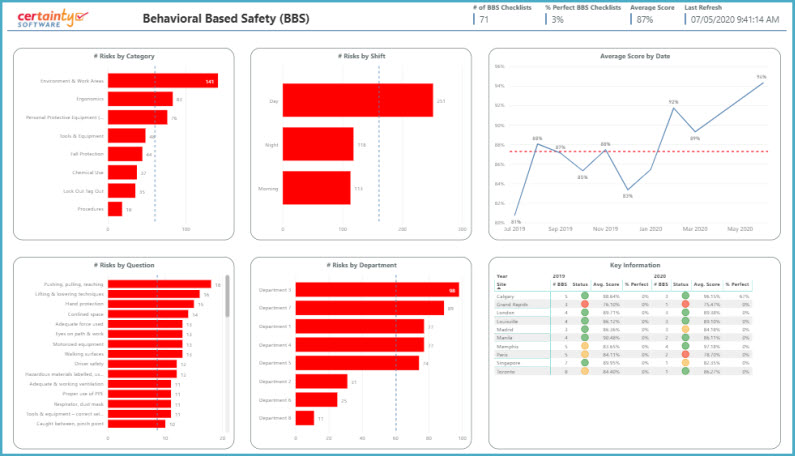In this blog series, we are exploring how to measure the success of a BBS program. We have spoken with industry professionals Joseph Braun, EHS Manager at Ferrara Candy Company; John Peoples, Global EHS Manager at Huntsman Corporation; and Chad Rasmussen, EHS Manager at Cardinal Health to get an insider look on how to manage an effective Behavior Based Safety management program.

The most rigid and comprehensive safety inspection is useless if you do not have the data to show it is being followed 100% and that it is yielding positive results. It can be easy to get caught up in going through the motions of any safety program, routinely following the guidelines without being able to see the big picture – the reason why any of this routine is important. Safety metrics with key leading indicators can support your front-line defense against workplace dangers. This kind of data can not only be used for analytical or insurance purposes but can contribute to the overall safety of a workplace by providing peace of mind in displaying that everyone is dedicated to their personal safety and the safety of their coworkers.
Behavior Based Safety Is only as Effective if you have Participation
The benefits of a BBS program are self-perpetuating – as more people participate in the program, more people become confident in the decisions they themselves and their peers are making to ensure everyone’s safety. As decisions about safety move into the forefront of employees’ minds during daily routines, and more people are becoming aware – and demonstrating – positive actions and attitudes towards safety, the safety culture of your establishment will grow. As Joseph Braun, EHS Manager at Ferrara Candy Company says “The best measure of the performance is the participation by the hourly employees, if they are completing the observations it shows that the culture has truly evolved into a safety-first culture.”

30+ Audit and inspection checklists free for download.
Behavior Based Safety Looks at the Leading Indicators
Safety is about preventing accidents and injuries in the workplace – if you are only implementing protective measures after an incident has occurred, you have already lost the safety game. Solely relying on data from accidents, injuries, and deaths – preventable incidents – defeats the purpose of a safety program altogether. Chad Rasmussen, EHS Manager at Cardinal Health puts it “Injury numbers are lagging indicators, so I try to avoid using them wherever possible. Even if people are going through the motions of a behavior-based observation, it still has the positive effect of getting people to think about safety and knowing that people are watching them. There are few secrets on a production floor.” A well-designed BBS program aims to recognize trends before they result in an injury or incident.
BBS Data is all About Utilization
Once your program has been in practice for long enough, you will start to accumulate enough data to make some meaningful decisions and evaluations about the safety of your workplace. You can look at several key metrics to determine how well your program is protecting the safety of your employees, but the most important metric might be participation. John Peoples, Global EHS Manager at Huntsman Corporation says about safety metrics “We use the information collected to communicate how engaged managers and supervisors are in the safety program. The metrics are the number of observations per person as per the agreed program.” If your data shows a lack of participation and buy-in from your employees, you will need to figure out how to address that. Participation is the first factor you have to address before you can address any other factors – without a wide enough scope and large enough data set, it can be hard to address the root safety concerns within your company that lead to incidents.
An effective BBS safety program effectively utilizes the tools available to them. Efficiently generating reports off the most relevant data is critical to improving the safety of an organization through Behavior Based Observation.
Check out previous blogs in this series and stay tuned for more!
Why You Should Include Behavior Based Safety in your Safety Management Program



